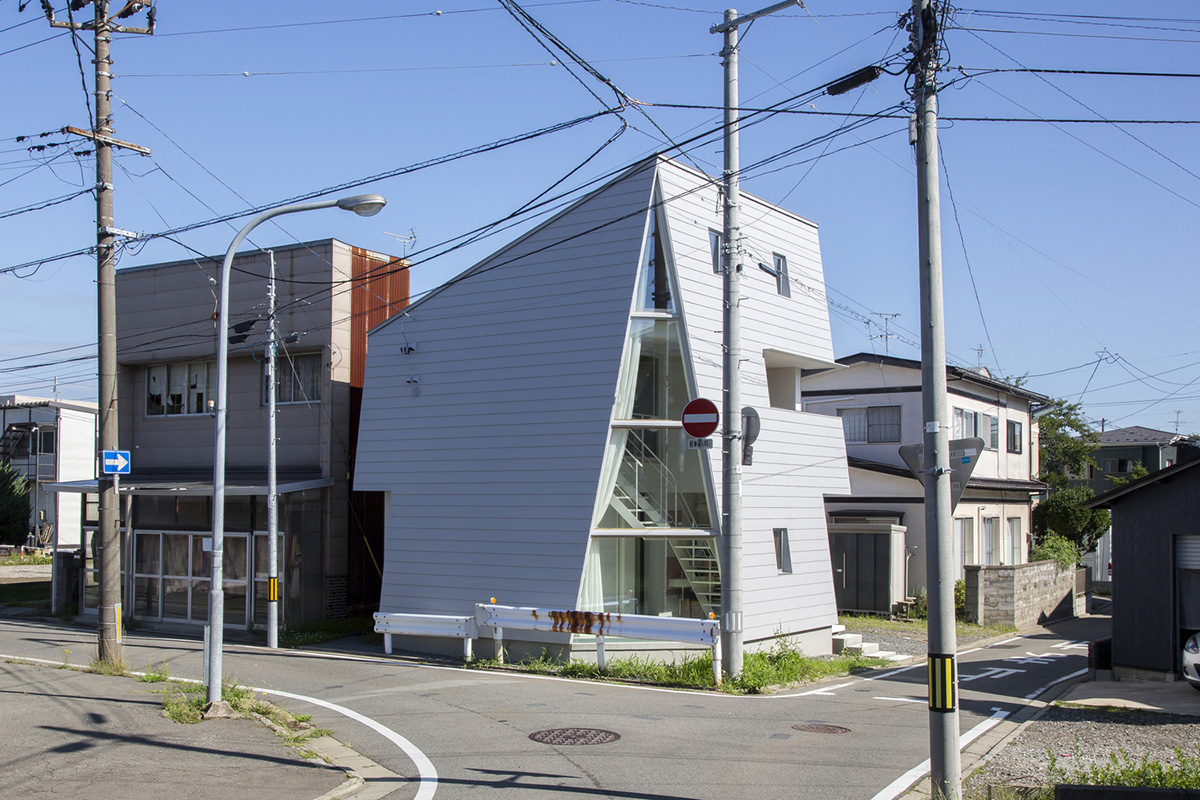Submitted by WA Contents
Takeru Shoji creates giant slit to reflect daily atmosphere of this house on corner plot of Japan
Japan Architecture News - Sep 06, 2019 - 05:06 13506 views

A giant slit cut the angular walls to reflect the daily life of this house and take daily sunlight to warm the house situated on a corner plot of Akita, Japan.
Designed by Japanese architecture firm Takeru Shoji Architects, the 74-square-metre house is located in the dense residential area of Narayama, Akita city, facing a row of a thousand cherry trees lining the bank of the Taihei River.

Named Shiro House, the building is comprised of angular walls, small windows and a giant slit which makes the building a part of daily urban life. The architects designed this private house for a couple and their child on a small land of 92.5 square meter, located at the fork of a road.

A client commissioned the studio to design a private house that has the ability to open out to its the surroundings, despite the harsh Akita snow, and enjoy the view of the cherry blossom trees lining the Taihei River from the comfort of the house.

The two-story house is located in a dense residential district, the narrow road fronting the site sees heavy traffic. "We felt that a conventional construction approach would seem oppressive to this surrounding, and thus the two walls facing the road are inclined inwards at a 7-degree angle," said Takeru Shoji Architects.
"In addition, we designed a huge triangular window by cutting off the corner of these diagonal walls. This window is a point of contact between the residents and the city, serving to open the house and extend the lives of the residents further outward. Thus by combining these factors, harmony is created with the cityscape."

On the first level, the architects designed the main bedroom, Japanese style room, and bathroom facilities are compactly organized whilst on the second floor, a simple open floor configuration of LDK and loft space is designed.

"These spaces provide additional vantage points from the triangular window, to look out towards the cherry trees and watch the movement of the city," they added.

The entrance door opens into a buffer space with the triangular window as its backdrop. This buffer space connects the two floors and acts as the traditional Japanese engawa. The triangular window frames the distinctive folding staircase and gives glimpses of the interior to the city and the cars passing by.

The interior reflection of daily life was important for the architects. So they created a large triangular-shaped window to expose the residents' daily movements, also to look beyond the inside of the house to the city beyond, where they can see the ebb and flow of the lives of the cherry blossoms and plants. Going up and down the staircase gives the residents a chance to take in the seasons and make life more colorful and expansive.

In a place where the convention is to design buildings with small openings and enjoy the seasons from a sheltered distance, shiro house rebels against this idea.
The house with its small open area takes full advantage of its setting and connects with the landscape and the cityscape; shiro house is created to be compact yet open and expansive, where the residents feel the changes in the season.






Floor plans

Sections A-B

Detail section
All images © Mitsuru Sato, Katsuhiko Sato
> via Takeru Shoji Architects
